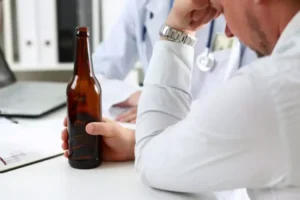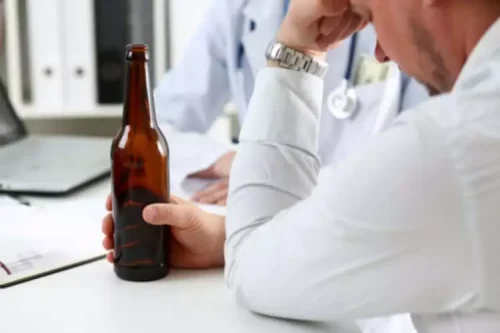
In some cases, AWS can be a Halfway house medical emergency and — if complications arise — potentially life threatening. Alcohol withdrawal is a natural physical response your body goes through when trying to break an alcohol dependence. Alcohol use disorder can lead to various physical and mental health conditions. Some people may also experience alcohol-related seizures, alternatively known as tonic-clonic seizures, which can occur 6 to 48 hours after stopping alcohol.
1. Benzodiazepines

The spectrum of alcohol withdrawal symptoms ranges from such minor symptoms as insomnia and tremulousness to severe complications such as withdrawal seizures and delirium tremens. Although the history and physical examination usually are sufficient to diagnose alcohol withdrawal syndrome, other conditions may present with similar symptoms. Most patients undergoing alcohol withdrawal can be treated safely and effectively as outpatients. Pharmacologic treatment involves the use of medications that are cross-tolerant with alcohol. Benzodiazepines, the agents of choice, may be administered on a fixed or symptom-triggered schedule.
- Professionals may also create a tapering schedule to help you safely stop drinking.
- But if you’re concerned that you’re drinking too much and you’re able to cut back, tapering could work for you.
- For most people with alcohol withdrawal, symptoms tend to be mild and include anxiety, restlessness, headaches, and a craving for alcohol.
- Diagnosing alcohol withdrawal is done by a medical professional, who will take a history and perform a thorough physical exam.
- Depending on the intensity and duration of alcohol or other drug use, post-acute withdrawal is known to last many months.
IDENTIFICATION AND MANAGEMENT OF ALCOHOL WITHDRAWAL SYNDROME
- Severe withdrawal symptoms can be dangerous and require medical supervision.
- Healthcare providers will treat you to stabilize you (unless you have some kind of advance medical directive on file with them).
- Keep reading to learn about the symptoms of alcohol withdrawal, alcohol withdrawal syndrome, how to manage withdrawal symptoms, and more.
- Patients who have had prior complicated withdrawals should not attempt to decrease their alcohol intake without consultation with their healthcare team.
Furthermore, the risk of developing an AUD, which can lead to AWS, depends on how often, how quickly, and how much alcohol someone consumes. Alcohol withdrawal syndrome (AWS) is a medical term for the symptoms that occur alcohol withdrawal syndrome symptoms when someone who uses alcohol over a prolonged period discontinues or significantly reduces their alcohol intake. Typically, those who experience alcohol withdrawal have an alcohol use disorder (AUD). This is because their body has already developed a tolerance and dependency on alcohol.

Find Alcohol Detox Services Today
While most individuals with moderate to severe alcohol dependence will struggle to do this on their own, some people with mild dependence can do this effectively. That being said, it is never safe to detox from alcohol outside of a medically supervised environment, https://ecosoberhouse.com/article/how-to-make-your-home-more-environmentally-friendly/ and you should never stop drinking abruptly. Following alcohol cessation, alcohol withdrawal syndrome typically presents as minor symptoms such as mild anxiety, headache, gastrointestinal discomfort, and insomnia. This syndrome can further progress to severe manifestations, such as alcohol withdrawal delirium, which poses significant diagnostic and management challenges.
In a symptom-triggered regimen, medication is given only when the CIWA-Ar score is higher than 8 points. An important concept in both alcohol craving and alcohol withdrawal is the “kindling” phenomenon; the term refers to long-term changes that occur in neurons after repeated detoxifications. Recurrent detoxifications are postulated to increase obsessive thoughts or alcohol craving.5 Kindling explains the observation that subsequent episodes of alcohol withdrawal tend to progressively worsen.
Text a Recovery Expert
Although it doesn’t occur in everyone, some people experience PSSD months after stopping long-term SSRI use. According to American Addiction Centers, anecdotal evidence indicates that PAWS symptoms can last 2 years or longer after someone stopped drinking alcohol. Sedative or hypnotic withdrawal shares many of the features of alcohol withdrawal, namely, agitation, disorientation, seizures, sympathetic hyperactivity, hypertension, insomnia, anxiety, and anorexia. Stimulant-withdrawal syndrome is treated by observation alone and does not require any specific medications. People having experienced alcohol withdrawal may suffer from sleep problems or minor signs of an overactive nervous system, such as fastened heartbeat, agitation, or sweats, for a few months. The main goal of treatment is to minimize your symptoms and prevent more severe ones like seizures or delirium, which could be fatal in some cases.
1. Questionnaires to detect alcohol use disorder

In some cases, these sleep disturbances — which may include strange, vivid dreams — persist for weeks or even months. AWS is often accompanied by intense cravings to drink and may affect your emotional, cognitive, and physical well-being. They may also do a blood test called a toxicology screen to measure the amount of alcohol in a person’s system. Blood tests and imaging tests can show if organs, such as the liver, have been affected by a person’s intake of alcohol. Anyone who thinks they are dependent on alcohol should consider speaking with a doctor.
Risks and Complications
- When a person is detoxing from alcohol, the symptoms may begin anywhere from 6 hours to a few days after their last drink.
- Potential complications from caffeine withdrawal include loss of productivity due to headaches, inability to concentrate, and insomnia.
- This may involve one one-on-one sessions with a social worker or therapist to help you deal with mental health issues or past traumas.
- You may experience severe confusion, high blood pressure, fever, high heart rate, and abnormal heart rhythms for a week or longer.
- You will likely need to make daily visits to your provider until you are stable.
To prevent this, your doctor may suggest a treatment program where you stay overnight. That way, you can get 24-7 support for your mental health and physical symptoms. Healthcare providers typically prescribe short-term medications to relieve the symptoms of mild to moderate alcohol withdrawal.
